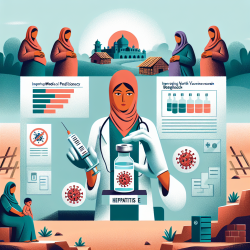Introduction to Safety Monitoring in Clinical Trials
Safety monitoring is a critical aspect of clinical trials, ensuring that patient welfare is prioritized throughout the drug development process. The research article "Safety Monitoring in Clinical Trials" highlights the importance of a systematic approach to safety evaluations, using quantitative methods to enhance decision-making. This blog post will explore how practitioners, particularly those involved in pediatric therapy, can implement these findings to improve their practice and outcomes for children.
Key Takeaways from the Research
The research emphasizes the need for proactive safety evaluations, moving from passive to active surveillance. Key elements include:
- Incorporating statistical methods, such as Bayesian frameworks, to enhance objectivity in safety assessments.
- Utilizing Data and Safety Monitoring Boards (DSMBs) for independent oversight.
- Ensuring timely communication of safety information among stakeholders.
Implementing Research Findings in Practice
For practitioners providing online therapy services, such as those at TinyEYE, integrating these safety monitoring principles can significantly impact the quality of care. Here are some actionable steps:
- Adopt a Data-Driven Approach: Utilize statistical methods to monitor therapy outcomes and identify potential safety concerns early. This proactive approach allows for timely interventions and adjustments to therapy plans.
- Establish Clear Communication Channels: Ensure that all team members are informed of any safety concerns or changes in therapy protocols. Regular updates and training sessions can help maintain a high standard of care.
- Engage with Stakeholders: Collaborate with parents, educators, and other healthcare providers to gather comprehensive data on therapy effectiveness and safety. This holistic view supports better decision-making and improved outcomes for children.
Encouraging Further Research
The evolving landscape of clinical trials and safety monitoring presents numerous opportunities for further research. Practitioners are encouraged to explore the following areas:
- Investigating the application of Bayesian methods in therapy settings to enhance outcome predictions.
- Studying the impact of real-time data collection and analysis on therapy adjustments and patient safety.
- Exploring the role of technology in facilitating efficient communication among stakeholders.
Conclusion
Implementing the insights from "Safety Monitoring in Clinical Trials" can significantly enhance the quality of care provided by practitioners, particularly those working with children. By adopting a data-driven approach and fostering collaboration among stakeholders, practitioners can ensure the safety and efficacy of their interventions.
To read the original research paper, please follow this link: Safety Monitoring in Clinical Trials.










